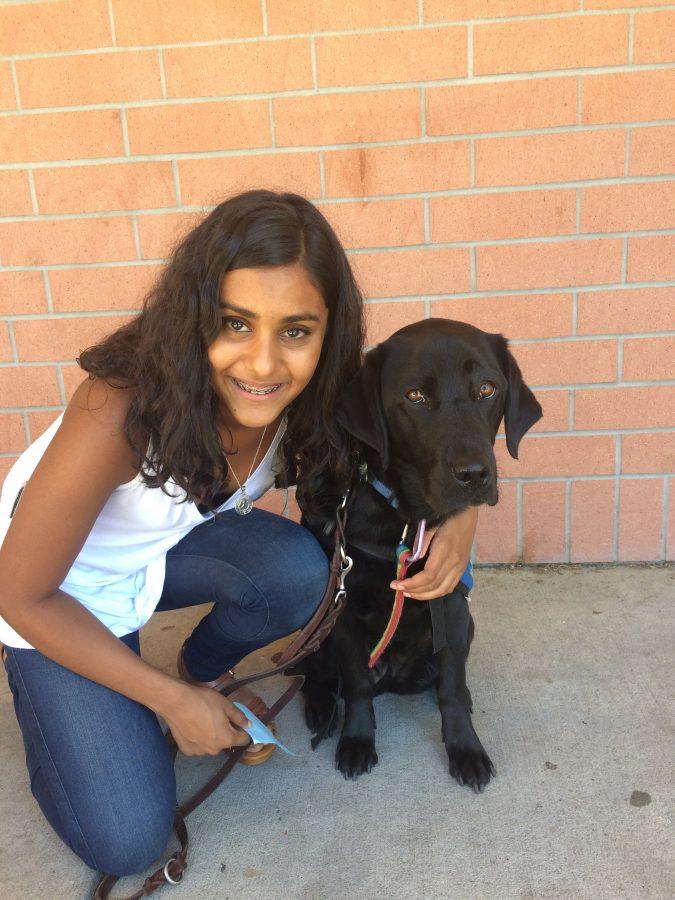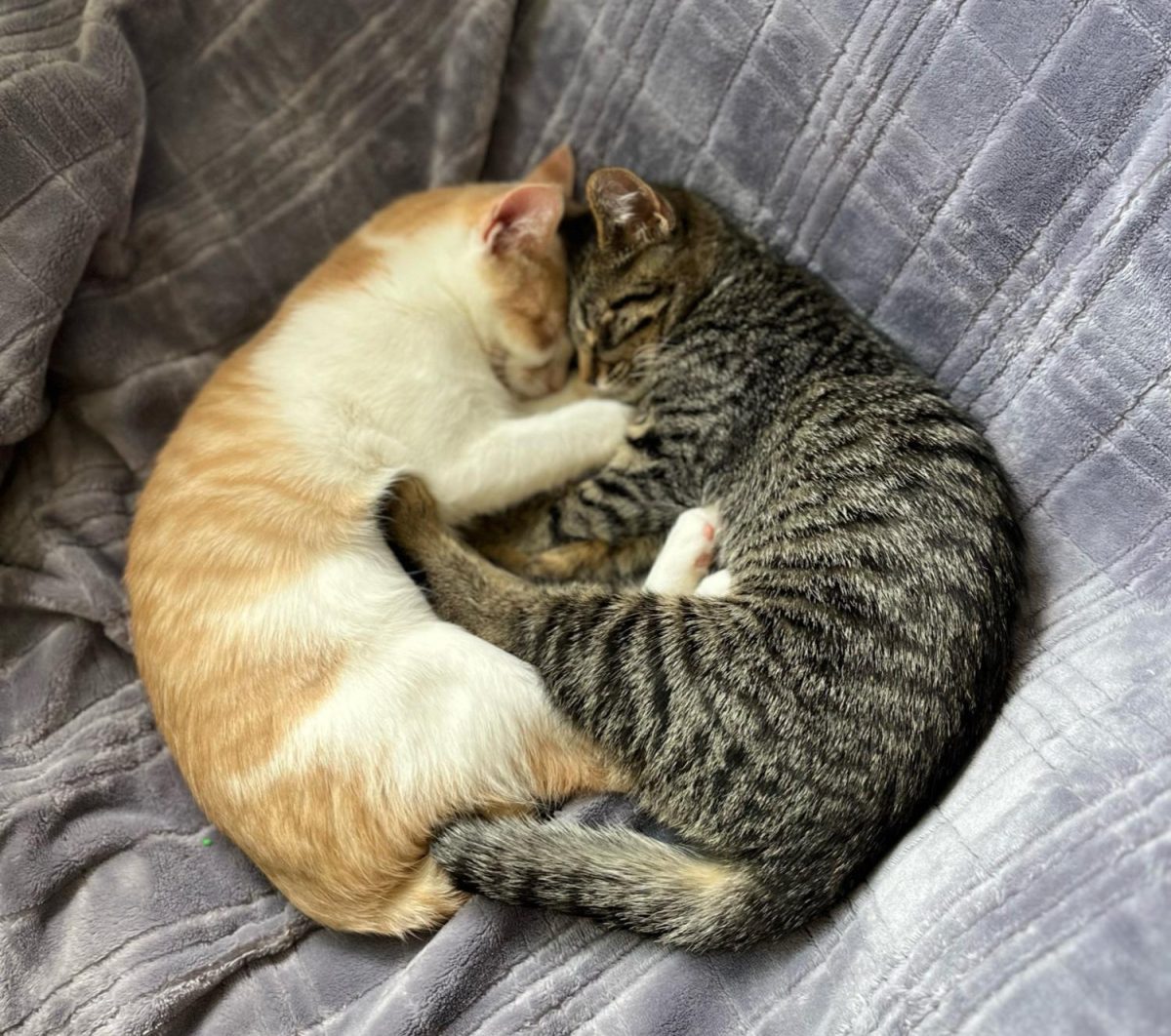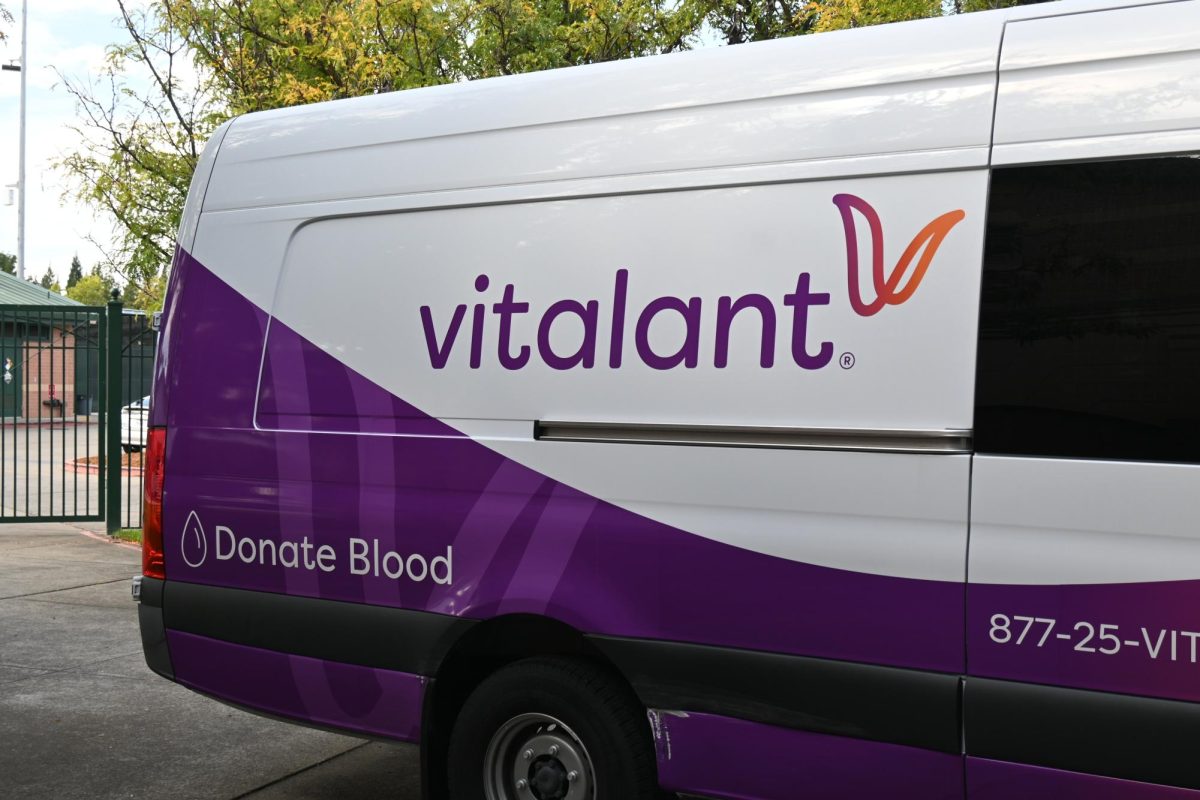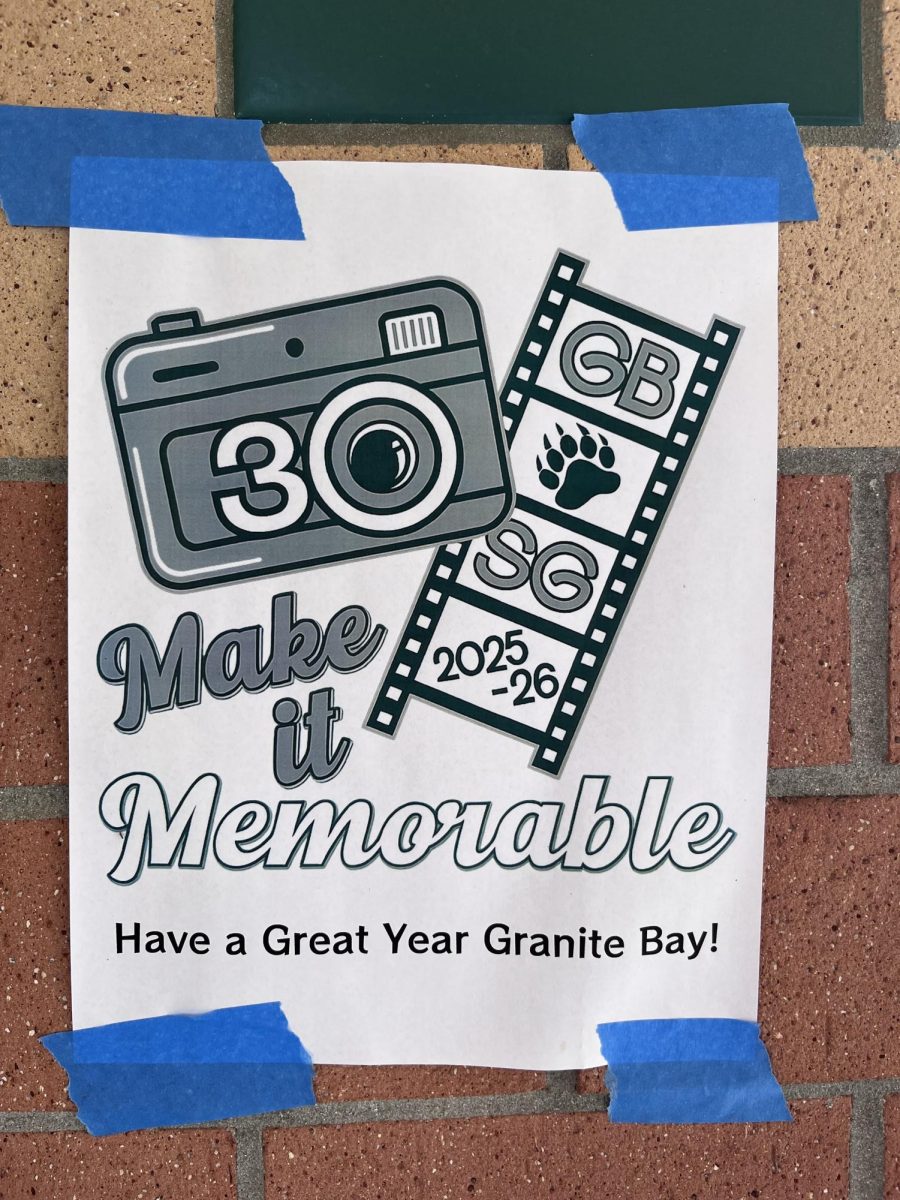A new four-legged friend has joined Granite Bay High School– meet Rialta, a three year old black lab and diabetic alert dog for freshman Madelaine Ghufran.
Ghufran started working with Rialta just over a year ago.
“I got her at the end of seventh grade,” Ghufran said.
Rialta even had a spot in the Cavitt Junior High School yearbook last year, right next to Ghufran.
“Rialta is a diabetic alert dog,” Ghufran said, “so if my blood-sugar starts dropping, she’ll alert me before it gets really serious.”
Rialta usually alerts Ghufran one or two times per day. As a signal, Rialta will stand up to let Ghufran know her blood sugar is low.
“She usually just sleeps under my desk, and if (my blood sugar is) low, she’ll stand up, she’ll alert (me), get a treat and then go back to sleep,” Ghufran said.
Although Rialta is now part of the GBHS campus, petting is not allowed– she is, after all, a working dog.
The process of allowing Rialta on campus was relatively easy.
“(Service dogs) come with behavioral training,” Ghufran said, “so they’re already publicly certified.”
Rialta received behavioral training from Guide Dogs for the Blind and scent training from Dogs4Diabetics.
Ghufran also went through training to learn how to handle Rialta in public. She went through three months of weekend training to learn about caring, handling and managing a service dog.
The process of training a dog to become a guide dog can last until the dog is 15 months old.
“(The guide dogs) go through a medical phase,” said Kylie Peterson, a puppy raiser for Guide Dogs for the Blind. “An eye doctor and an orthopedic doctor or vet comes to make sure they’re all checked out.”
If any issues are found, the dogs go to Dogs4Diabetics, a non-profit organization, where the clients are able to keep an eye out for any problems.
Ghufran and Rialta went through nearly six months of trial periods where she had to alert Ghufran’s lows 80 percent of the time for six weeks. In November 2015, the pair graduated and became a working team.
Dogs in training must learn how to look at their handler in order to spot any signs of a change in blood sugar, and a main part of their job is to engage with their handler and notify them if there is an issue.
The dogs detect a change in blood sugar by smelling the handler’s sweat and are even able to notice a change in blood sugar when their handler is in another room.
Rialta has gotten an extremely positive response from students across campus.
Freshman Amanda Batiste, a friend of Ghufran’s, said Rialta is a “really nice dog,” and she “(doesn’t) even pay attention to her when she’s near Ghufran because (Rialta’s) so calm. She just blends in with everyone.”
Olivia Thompson, a freshman who went to Cavitt with Ghufran and Rialta, said that she would sometimes get bored in class, “but if (she) watched Rialta, (she’d be) super focused.”
“Rialta brings me joy and happiness,” Thompson said. “She’s so cute!”















